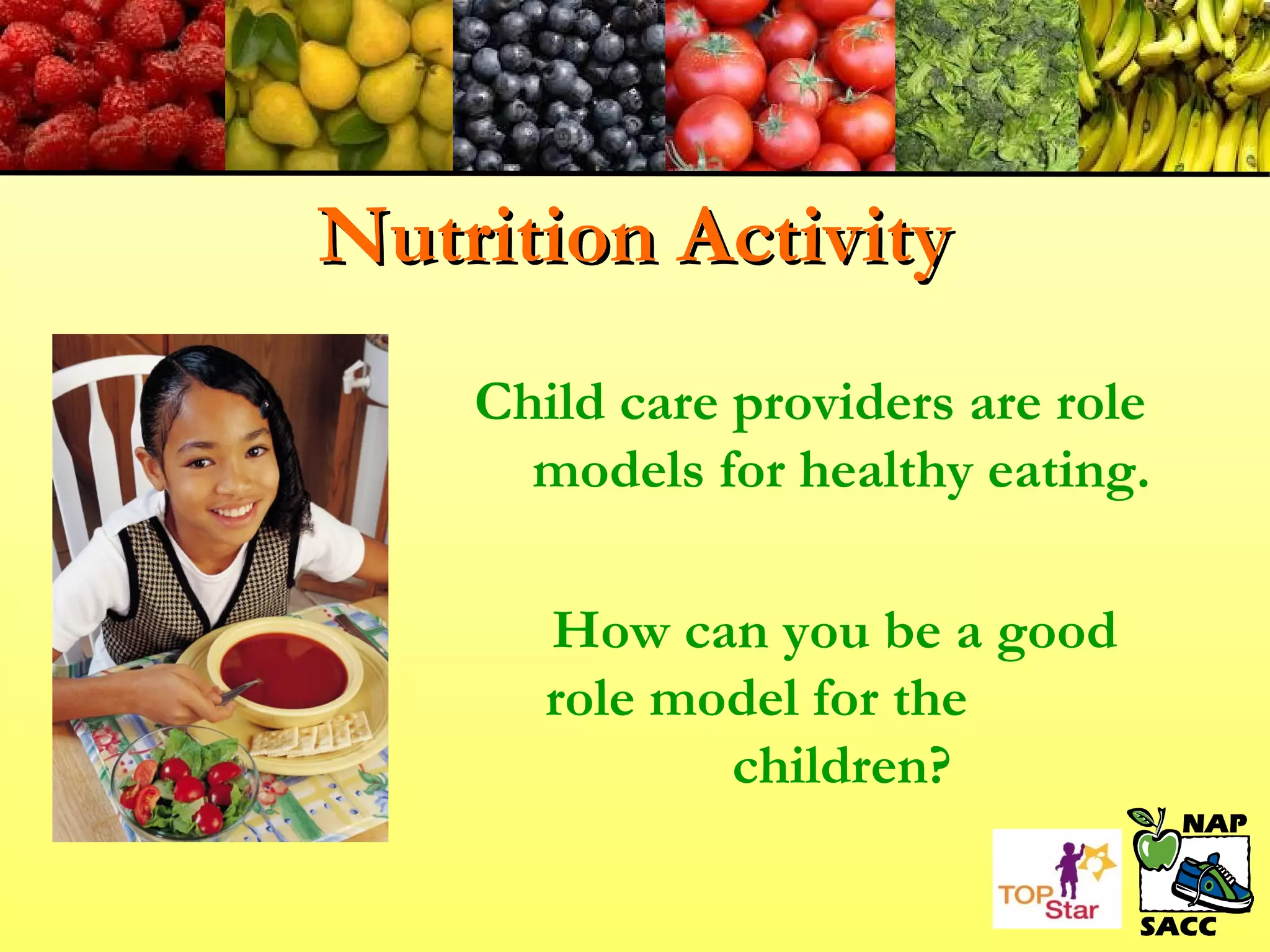This document discusses the importance of good nutrition for young children in child care settings. It notes that over 1 in 4 preschoolers are overweight or obese, and poor nutrition contributes to weight gain. Child care providers can help by promoting healthy eating habits. The document outlines healthy and unhealthy food options and provides tips for child care providers to role model and encourage healthy eating. This includes serving fruits and vegetables creatively, limiting sugary snacks and beverages, making mealtimes relaxed, and involving children in food preparation activities. Nutrition education for both children and staff is also recommended.





































